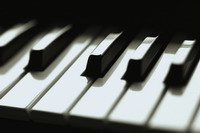Piano Sheets > Rod Stewart Sheet Music > Have I Told You Lately (ver. 1) Piano Sheet
Have I Told You Lately (ver. 1) by Rod Stewart - Piano Sheets and Free Sheet Music

About the Song
Other avaliable versions of this music sheet: Version 1 Version 2 Version 3
How to locate free sheet music easily If you want to learn how to play piano then having access to free sheet music can be an inexpensive and great way to learn! There are plenty of websites online, which offer you high quality sheet music free. Here are some ways you can locate these sources for your benefit.
The concept of free
If a site provides sheet music, which you can download and print without any infringement of copyright or violations then this is free sheet music. Some websites may have a prerequisite of attaining membership via subscriptions to newsletters or registering with an account. In order to arrive at sites providing no obligation free sheet music, it may take a bit of effort and patience but the results are worth it!
(More...)
Download this sheet!
About the Artist

Random article
How to locate free sheet music easily If you want to learn how to play piano then having access to free sheet music can be an inexpensive and great way to learn! There are plenty of websites online, which offer you high quality sheet music free. Here are some ways you can locate these sources for your benefit.
The concept of free
If a site provides sheet music, which you can download and print without any infringement of copyright or violations then this is free sheet music. Some websites may have a prerequisite of attaining membership via subscriptions to newsletters or registering with an account. In order to arrive at sites providing no obligation free sheet music, it may take a bit of effort and patience but the results are worth it!
(More...)
